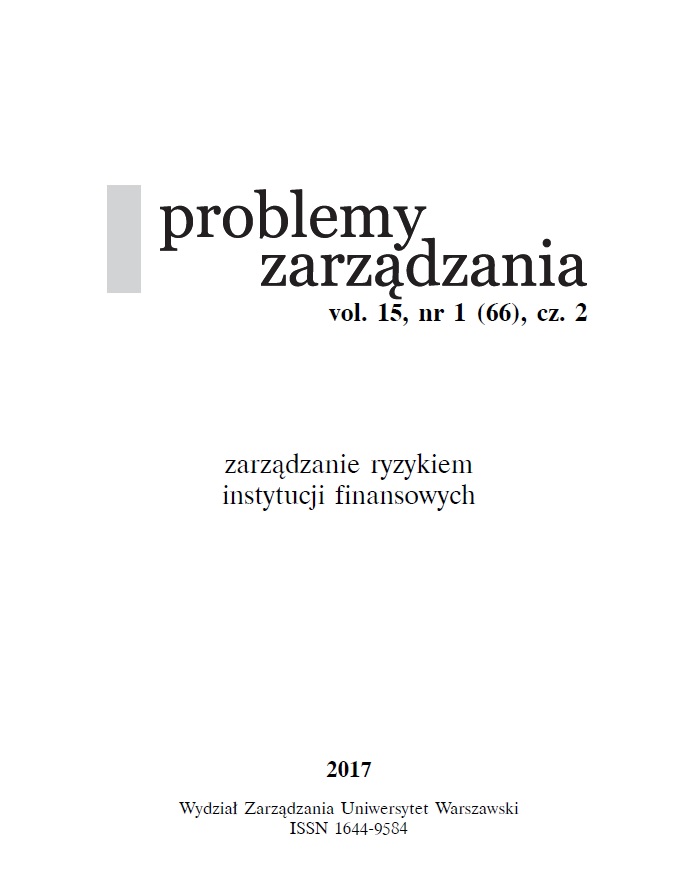Zmienność cen na globalnym rynku surowców a ryzyko banku
Price Volatility in the Commodity Market and the Bank’s Risk
Author(s): Bogdan WłodarczykSubject(s): Social Sciences, Financial Markets
Published by: Wydawnictwo Naukowe Wydziału Zarządzania Uniwersytetu Warszawskiego
Keywords: credit risk; market risk; raw materials; petroleum; GARCH; VaR
Summary/Abstract: Price volatility in raw material markets significantly affects the efficiency of real economy. Raw materials are not only used in the industry but are also very popular in periods of economic downturn. An appropriate prognosis of price volatility in these markets and their adequate security ensured by means of financial instruments can be a basis for avoiding many financial perturbations of enterprises, and consequently of financial institutions. Financial institutions, including banks, are exposed to credit and market risk, through the absorption of a part of market risk in a direct (investments in raw materials, transaction services) and indirect way (providing credit to entities in commodity markets). Selection of these prognosis tools as well as appropriate instruments securing prices, hence hedging the risk from the financial market, are elements of the risk hedging policy in the real sphere, which has an effect on the credit risk and investment. The aim of the article is the bank’s risk assessment in the context of price volatility in commodity markets. At the same time, the research problem was raised that refers to the way in which the variability of prices and rates of return in the commodity market is reflected in the level of the bank’s risk. An analysis of the asymmetry effect and long memory in the modelling and prognosis of conditional volatility and market risk on the commodity market was conducted in the article, taking petroleum as an example. GARCH and FIAPARCH models were used for that purpose. The analysis of the in-sample and out-of-sample prognosis showed that the variation of rates of return for oil is better described by a non-linear model of the variation using a long memory and asymmetry effect.
Journal: Problemy Zarządzania
- Issue Year: 15/2017
- Issue No: 1 (66)
- Page Range: 107-124
- Page Count: 18
- Language: English, Polish

